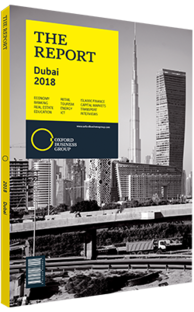Bernd van Linder, CEO, Commercial Bank of Dubai: Interview

Interview: Bernd van Linder
In what ways is the UAE’s banking sector feeling the effects of higher US dollar interest rates?
BERND VAN LINDER: Although the currency peg implies that the Central Bank of the UAE (CBUAE) will follow the moves of the US Federal Reserve Bank, this does not imply a one-to-one relationship. First, when you look at market rates in the UAE, the Emirates Interbank Offered Rates have been above the USD London Interbank Offered Rates for some time, reflecting the different characteristics of the USD and the UAE markets. As such, the rate hikes in the US did not translate in full to equivalent rate hikes in the UAE. Second, rate hikes have different effects on a bank’s assets and liabilities. For banks that have their funding mix right, implying a large proportion of interest rate-insensitive liabilities, a hike in interest rates has a positive net effect on margins. So to the extent that higher USD interest rates imply higher UAE interest rates, it does affect the sector, but not in a linear way.
As for credit demand, the rates hikes that we have seen thus far have not had a dampening effect on credit demand. In a country like the UAE, one would expect credit demand to grow in line with GDP. For 2017, this is what we have seen. For 2018, forecasts by the IMF and others are for GDP to increase in excess of 3%, which will imply higher credit growth than we have seen in 2017. I do not expect this to be affected by the rate hikes we will likely see in 2018. The consistency in demand for credit has also been helped by the excellent job the CBUAE has done in managing liquidity in the banking system.
Has digitisation affected entry for new competitors, and how has this process changed the domestic competitive landscape?
VAN LINDER: It is not very clear that digitisation has lowered barriers to entry. When you look at financial technology (fintech) companies, the vast majority are focused on developing front-end systems. They focus on developing the next app, which builds on banks’ existing infrastructure. Only a limited number of fintech firms actually try to disrupt the banking process, such as those in the blockchain segment, where there are very interesting projects being carried out.
Many intangible barriers to entry still exist. One is public trust: banks are seen as stable, reliable institutions, and for newcomers this is not easy to replicate. It takes time to build a good reputation. Another aspect to consider is regulation: while banks have the skills and experience to comply with all the different layers of financial regulation, for fintech firms it takes great efforts to do so. Lastly, banks with physical branches will always be more appealing to customers than banks with no physical infrastructure. Even though there will be fewer branches per bank and the role of branches is changing into a more sales and service centre, it is also true that branches will not completely disappear from the market.
As government-related entities make adjustments to adapt to lower oil prices, what measures are being implemented to sustain credit growth?
VAN LINDER: Most countries in the region have learned to live with the oil prices at this level of $ 55-65 per barrel. Governments in the region are taking the right measures: they are diversifying their revenue streams and further improving their public financial health by adjusting expenditure, introducing value-added tax, and counter-cyclically spending with a focus on diversification and investment. These are all helping to sustain credit growth. Furthermore, structural improvements such as the Credit Bureau in the UAE and Saudi Arabia are having a positive impact on confidence in the banking sector, which in turn causes an upward growth trend of credit in these markets. Bankruptcy law will also be an important game changer in the medium term, as it will further boost confidence and predictability in the market.
You have reached the limit of premium articles you can view for free.
Choose from the options below to purchase print or digital editions of our Reports. You can also purchase a website subscription giving you unlimited access to all of our Reports online for 12 months.
If you have already purchased this Report or have a website subscription, please login to continue.

